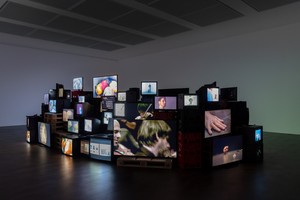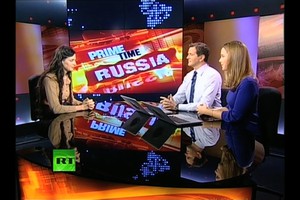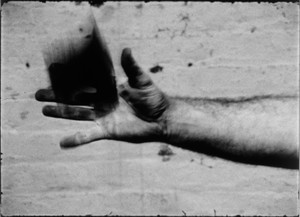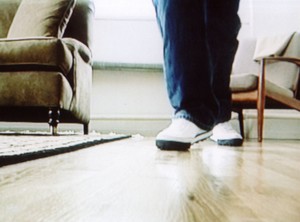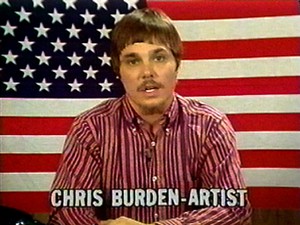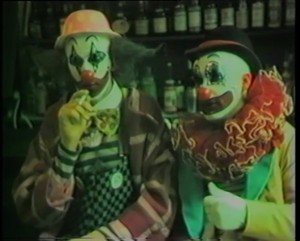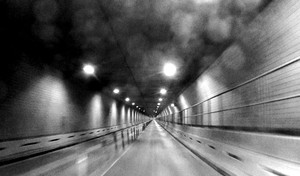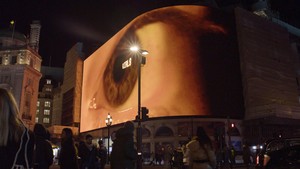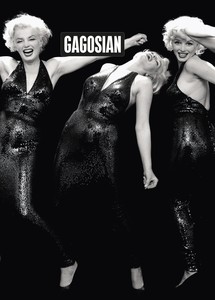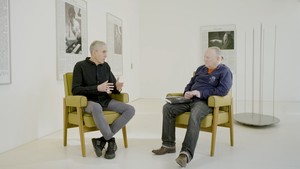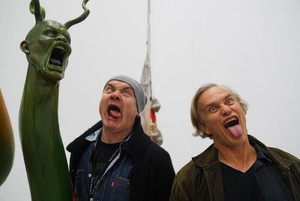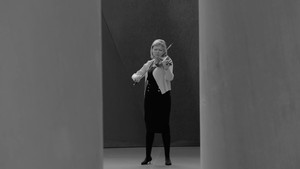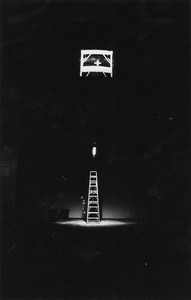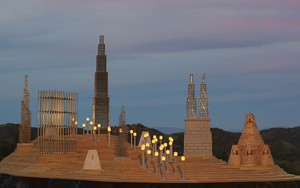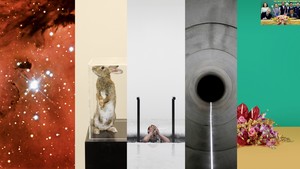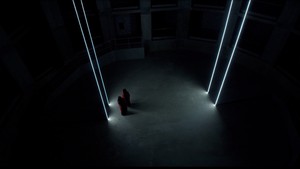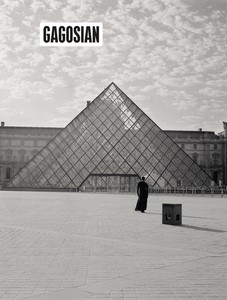You’re only as young as the last time you changed your mind.
—Timothy Leary
Broadcast: Alternate Meanings in Film and Video employs the innate immediacy of time-based art to spark reflection on the here and now. Looking to the late 1960s—a historical moment marked by deep uncertainty, social unrest, and radical transformation—Broadcast loosely adopts famed psychologist and countercultural icon Timothy Leary’s mantra “turn on, tune in, drop out” as a guide for negotiating our present moment.
The opening chapter features six artworks that, despite their varied inspirations and contexts, share a desire to explore differing experiences of reality. The series “turns on” with a video by Taryn Simon and a film by Richard Serra that present distinct approaches to developing self-awareness, either through interrogations of mass-media conventions or by staging actions that test the limits of the body. In the second section, Douglas Gordon and Chris Burden “tune in” to external surroundings and circumstances, whether one’s immediate environment or the thrall of broadcast television, respectively. Finally, Damien Hirst and Adam McEwen each present durational work that stages mechanisms to “drop out” of the norms and confines structuring daily life.
Each chapter of Broadcast will introduce a new set of films and videos on Tuesdays. The next chapter will debut on June 2.
“Turn On”
Taryn Simon
Cutaways, 2012
At the close of the taping of a video interview for Prime Time Russia in Moscow, Simon was asked to sit in silence and stare at the newscasters for several minutes so that the producers could gather additional footage for the editing process. Cutaways (2012) presents this footage as an autonomous work.
Richard Serra
Hand Catching Lead, 1968
Serra’s first-ever film, Hand Catching Lead (1968), comprises a set of repetitive actions centered on a human fist attempting to grasp—and therefore manipulate—pieces of lead dropped from above the camera frame. According to the artist, the film came about following a request to make a documentary about the construction of his sculpture House of Cards (1969). Recognizing the limitations of the documentary genre as purely illustrative, Serra was inspired by contemporary avant-garde films such as Yvonne Rainer’s Hand Movie (1966).
“Tune In”
Douglas Gordon
Domestic (as long as it lasts), 2002
Domestic (as long as it lasts) was made in 2002 in Gordon’s one-bedroom apartment in downtown New York City. It shows the artist’s foot repeatedly kicking the camera around a clean, quiet domestic space until the video blacks out. The victim of the booting, the camera itself, is recording the footage we see. The viewer is disoriented by the film’s upsetting of the conventional relationship between documenting and participating, which makes the camera complicit in the act.
Chris Burden
The TV Commercials 1973–1977, 1973–77/2000
The TV Commercials 1973–1977 (1973–77/2000) is a compilation of four video works—TV Ad (Through the Night Softly) (1973), Poem for L.A. (1975), Chris Burden Promo (1976), and Full Financial Disclosure (1977)—that were aired as purchased spots on television between 1973 and 1977. Burden notes: “During the early ’70s I conceived a way to break the omnipotent stranglehold of the airwaves that broadcast television had. The solution was to simply purchase commercial advertising time and have the stations play my tapes along with their other commercials.”
“Drop Out”
Damien Hirst and Angus Fairhurst
A Couple of Cannibals Eating a Clown (I Should Coco), 1993
Filmed by Gregor Muir, A Couple of Cannibals Eating a Clown (I Should Coco) (1993) centers on a conversation between Hirst and Fairhurst, who are dressed as circus clowns with makeup done by Leigh Bowery. Set in Green Street, a private club in Mayfair run by Orlando Campbell during the 1990s, the video is rife with contradictions as the beloved children’s characters chain-smoke, drink heavily, and spray each other with silly string while recounting gruesome and macabre stories of death and injury.
Adam McEwen
Escape from New York, 2014
Using looped footage shot on an iPhone camera, Escape from New York (2014) captures the monotonous, almost hypnotic experience of speeding outbound through the four major tunnels (Brooklyn Battery, Holland, Lincoln, and Queens Midtown) that act as central access routes to the island of Manhattan. Lulled by the rhythmic curves and uniform environment of such a setting, the viewer develops a sense of anticipation for the cathartic freedom from the repetitions of the closed surroundings. Yet with a literal light at the end of the tunnel, the video abruptly cuts to the beginning of the footage, circumventing the awaited effects of liberation. The excerpt shown here documents the entirety of a single outbound trip through the Lincoln Tunnel.
